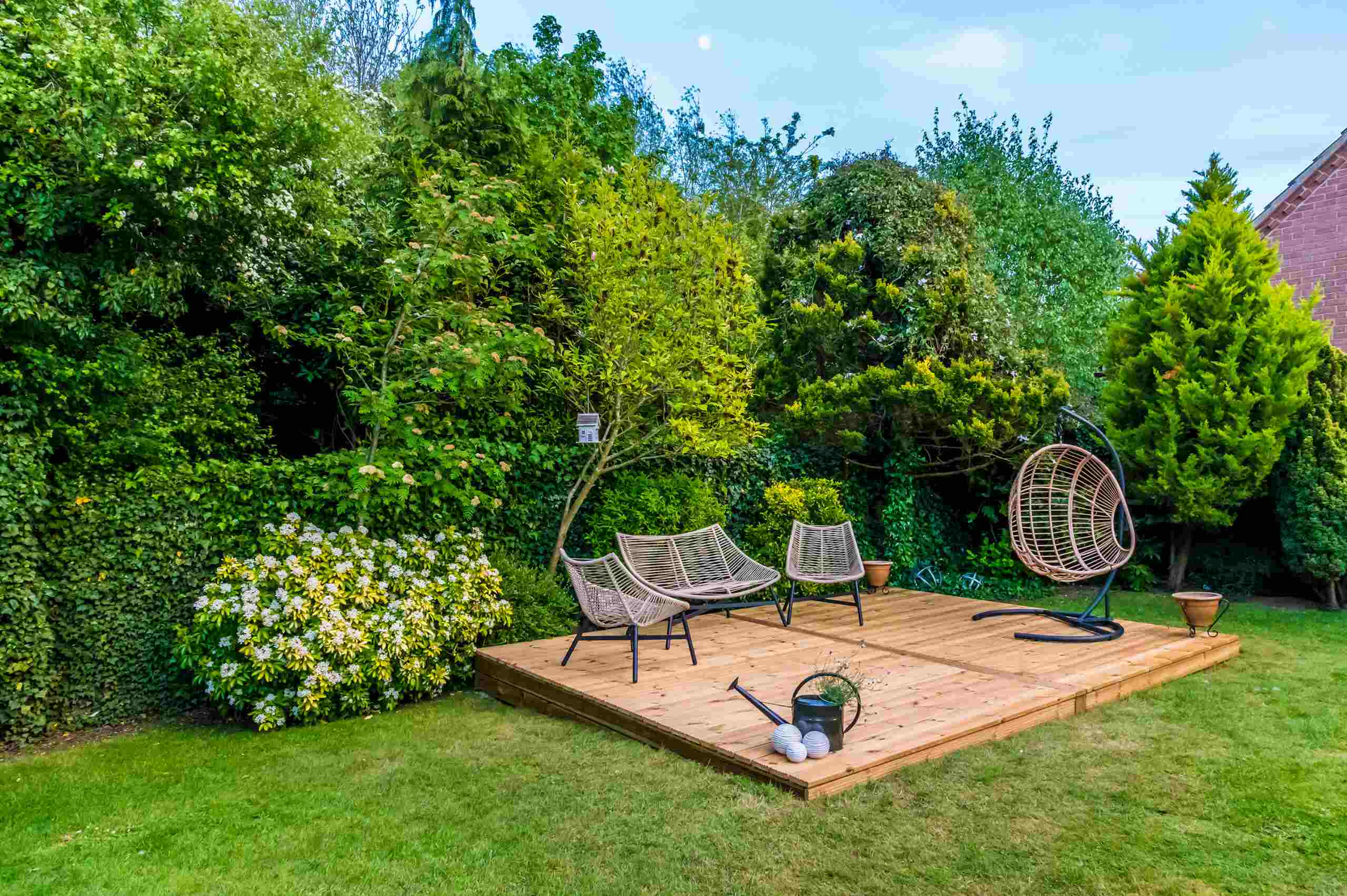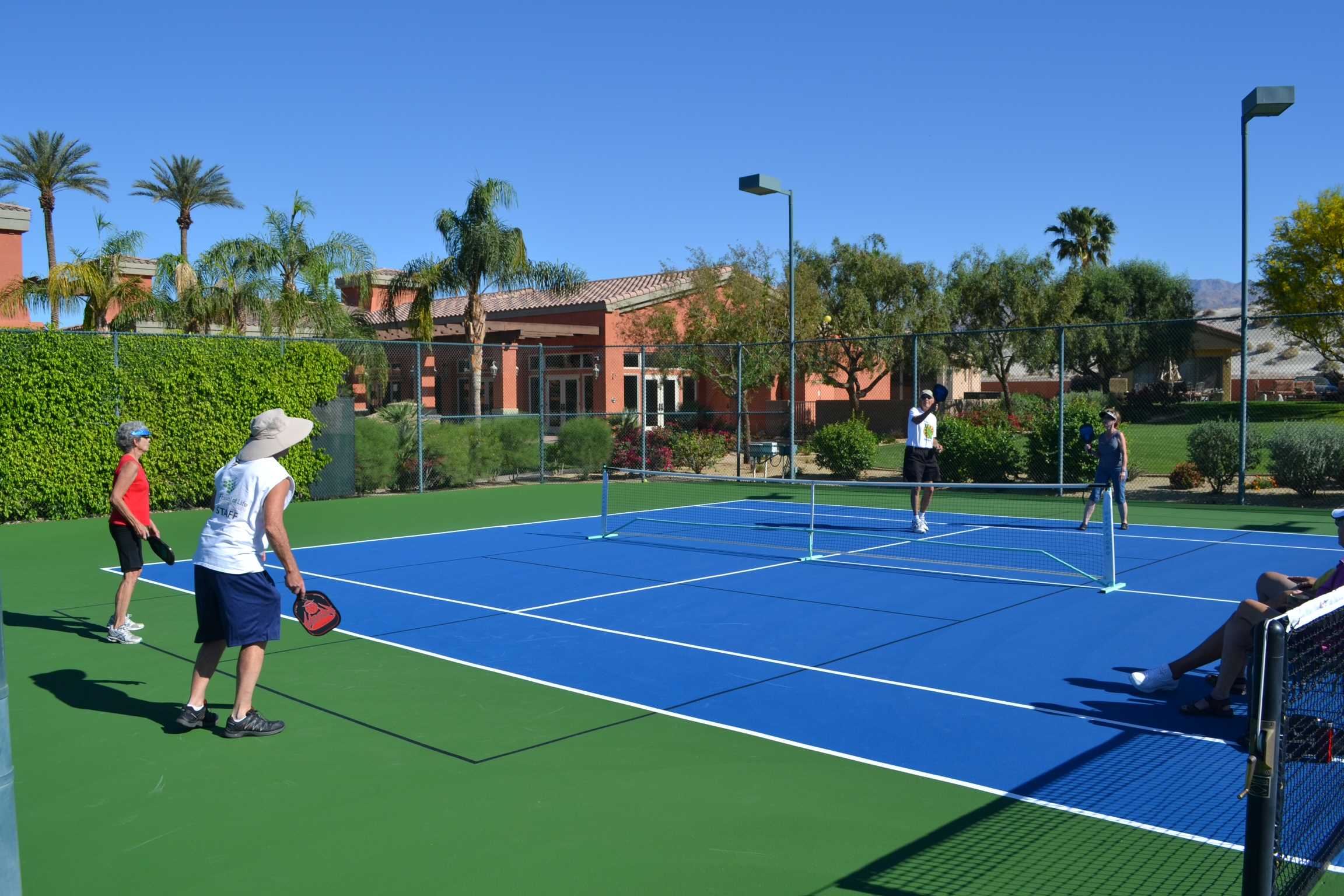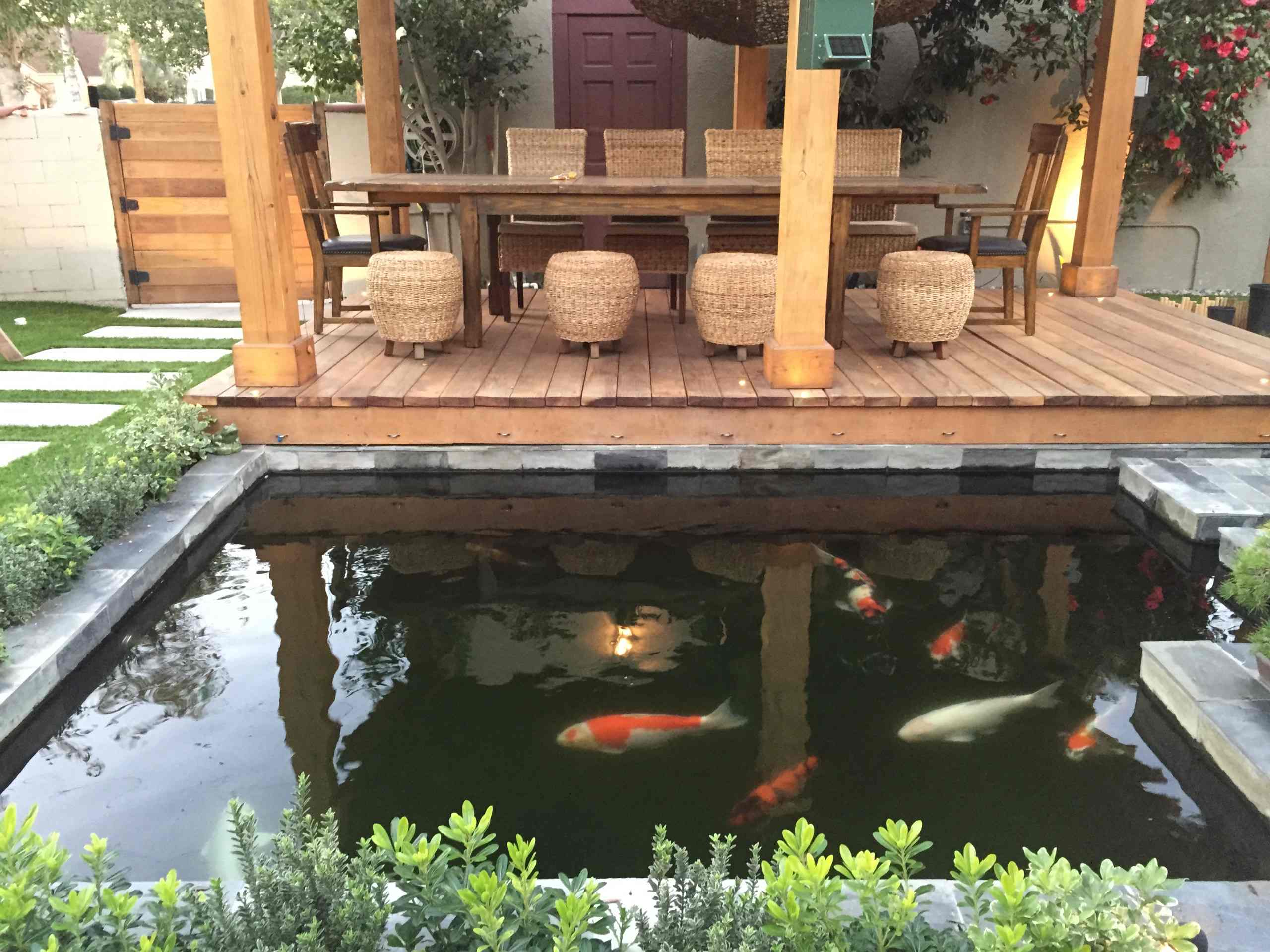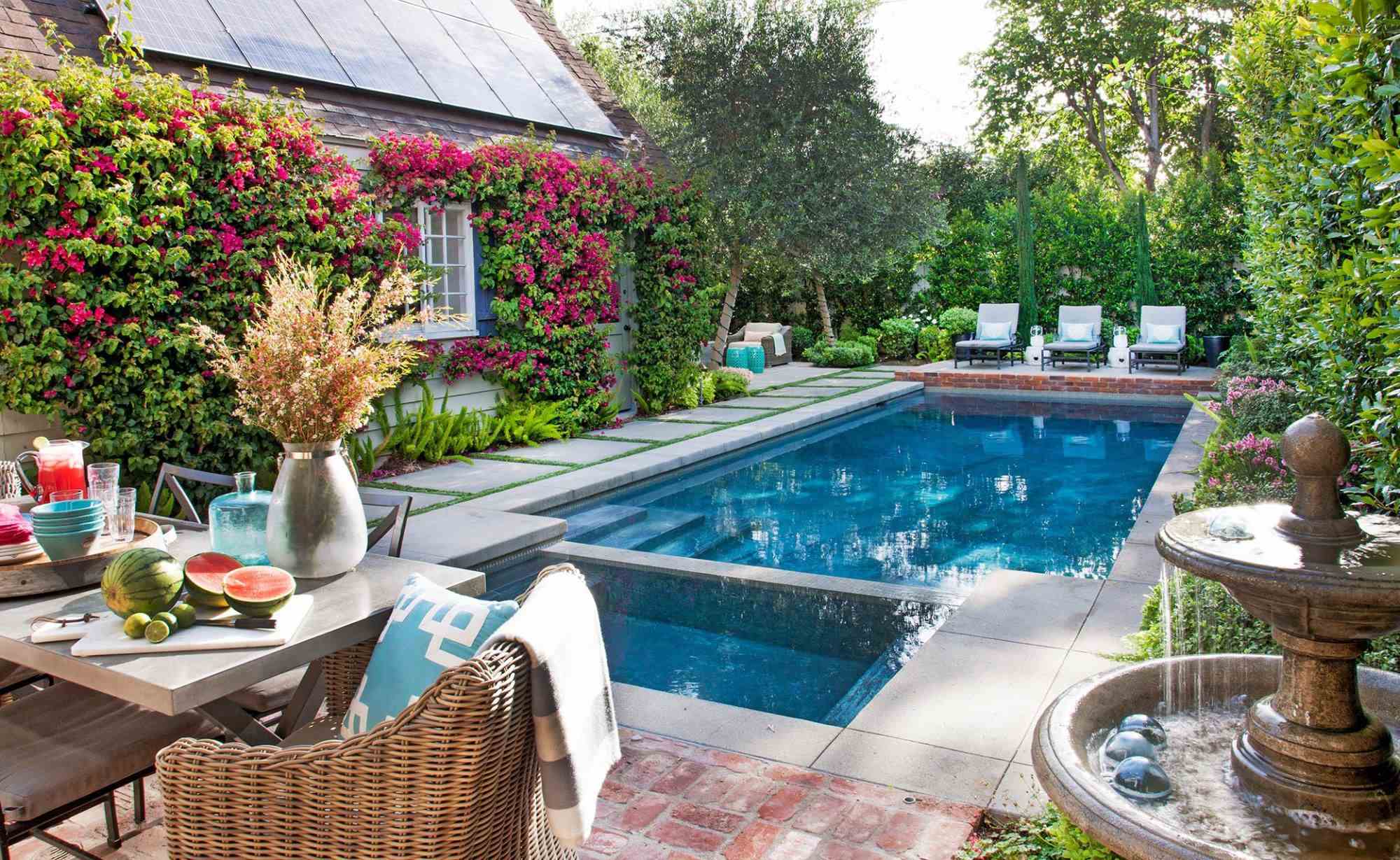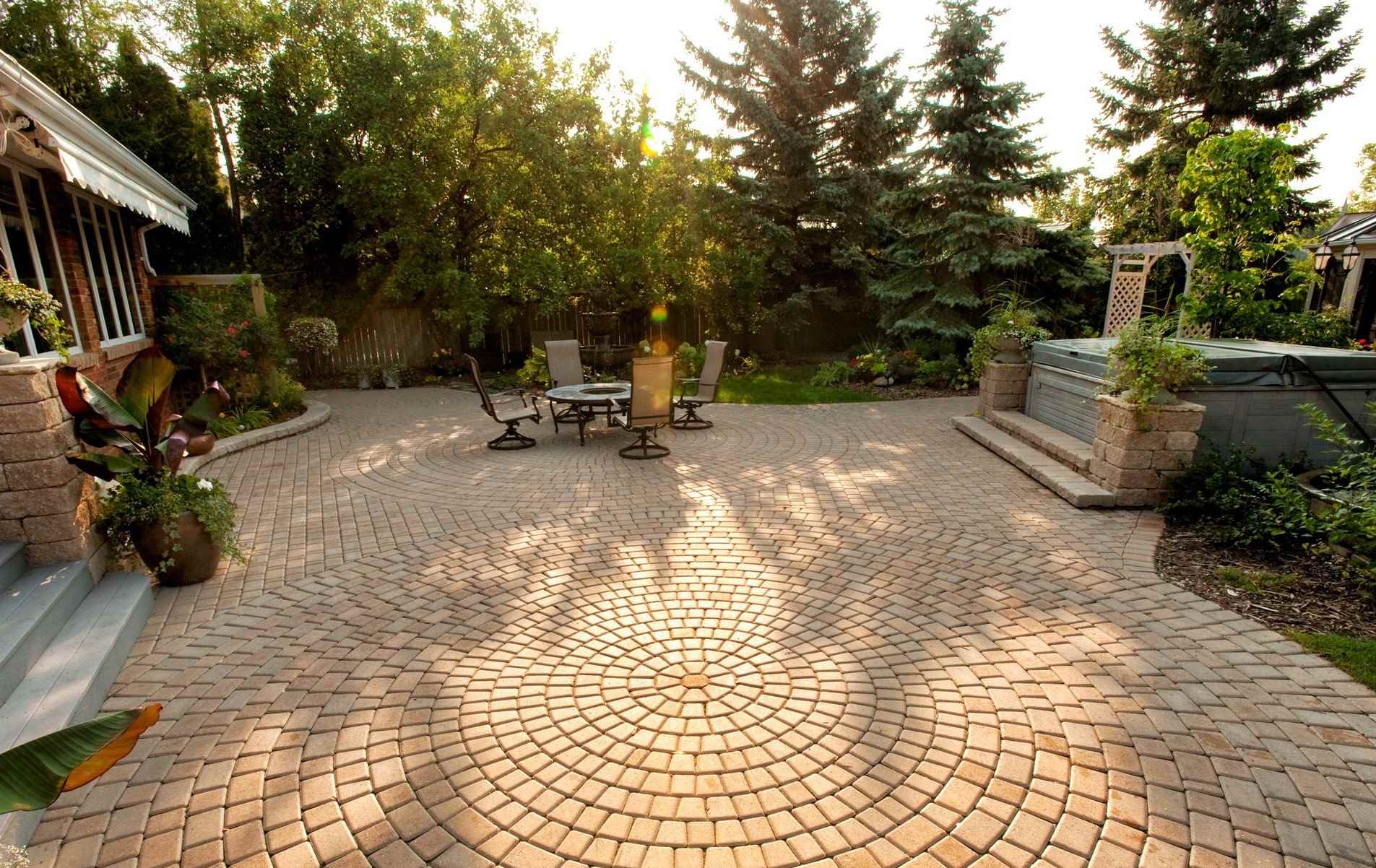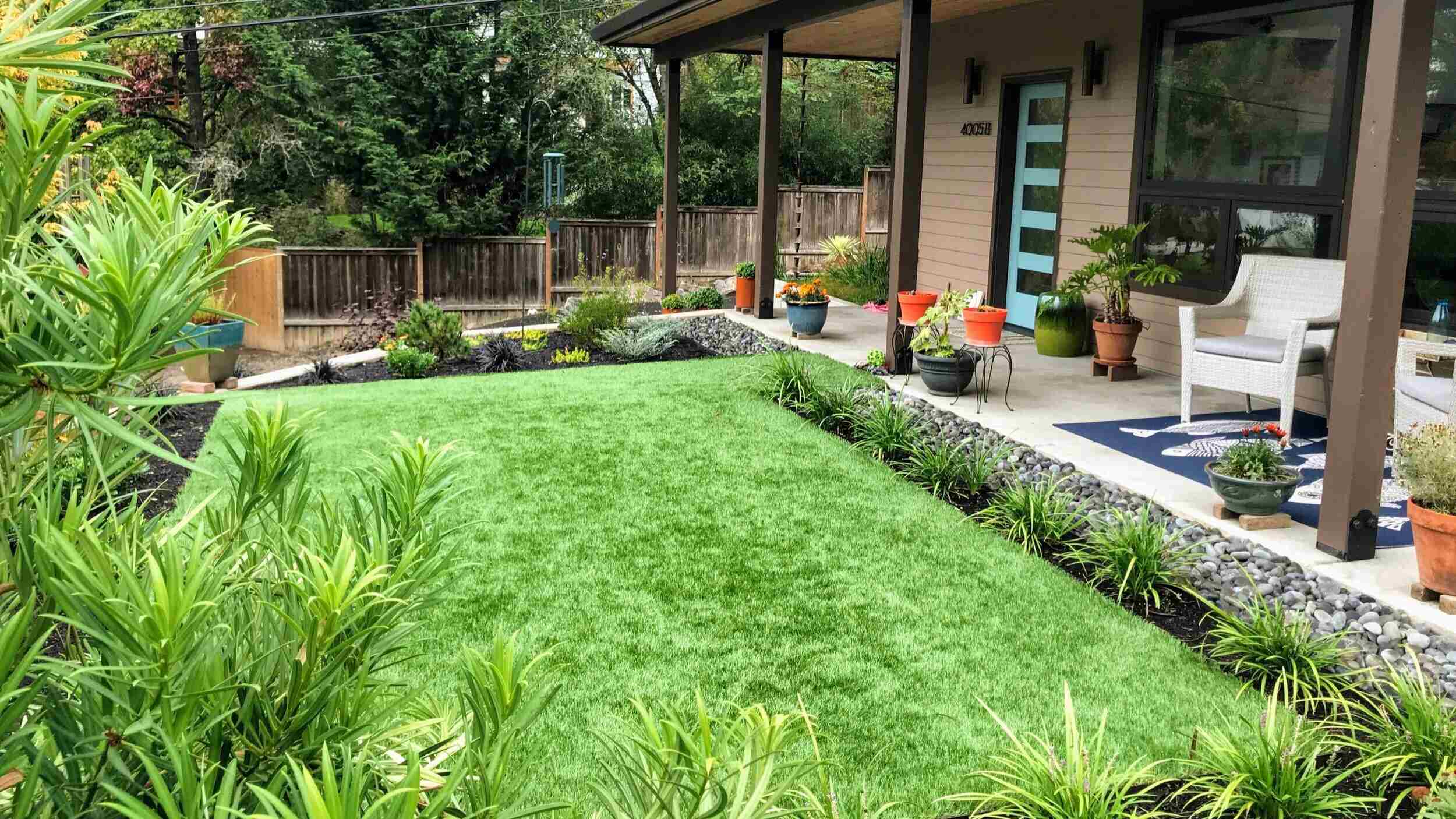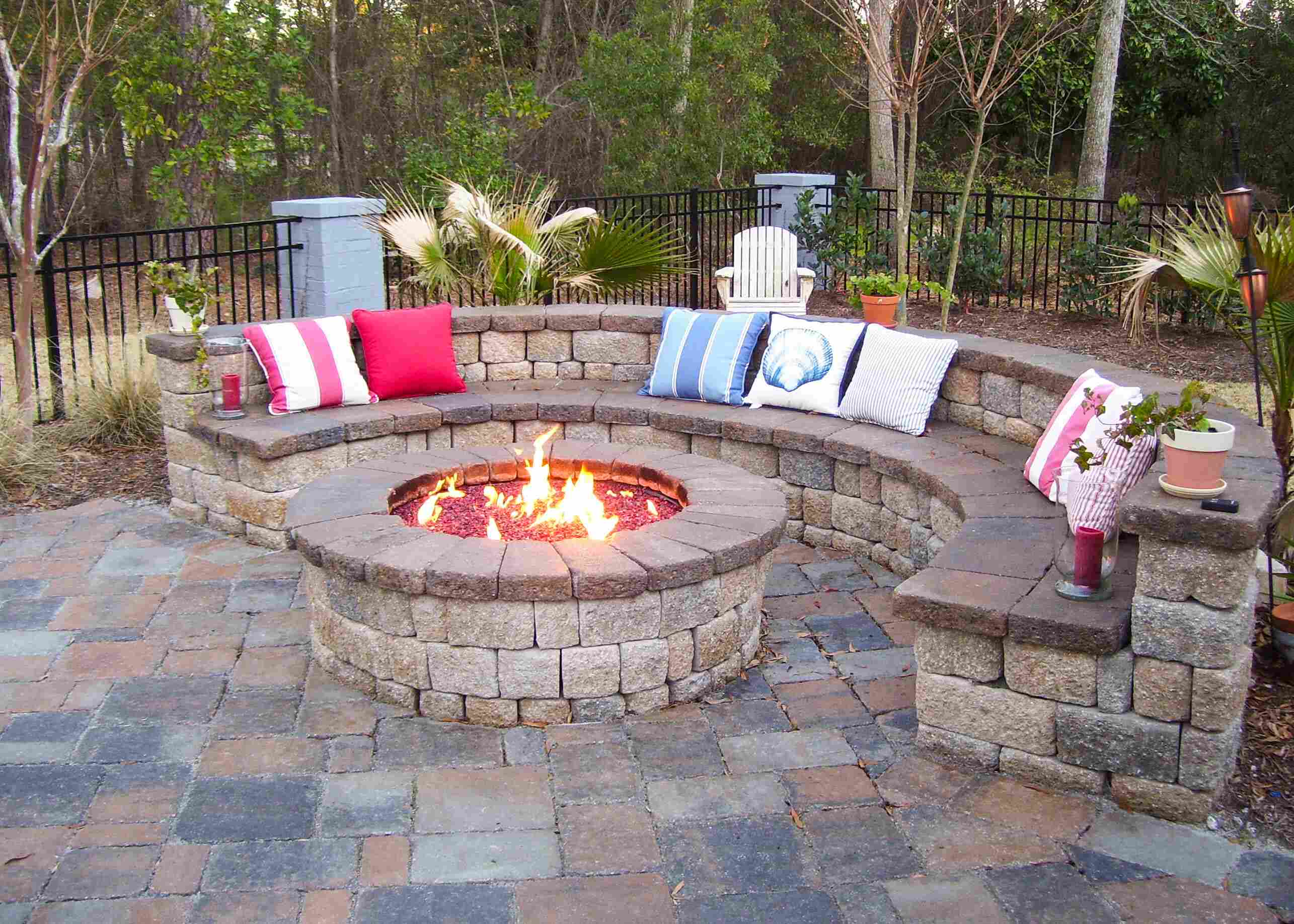Home>Garden Design>How Much Does It Cost To Build A Pond In Your Backyard


Garden Design
How Much Does It Cost To Build A Pond In Your Backyard
Modified: January 22, 2024
Looking to add a pond to your backyard? Discover the average cost of landscape design and construction for building a stunning pond in your outdoor space.
(Many of the links in this article redirect to a specific reviewed product. Your purchase of these products through affiliate links helps to generate commission for Chicagolandgardening.com, at no extra cost. Learn more)
Table of Contents
- Introduction
- Factors Affecting the Cost of Building a Pond
- Cost Breakdown of Pond Construction Materials
- Site Preparation and Excavation Costs
- Pond Liner and Filtration System Costs
- Additional Costs for Landscaping and Aesthetics
- Labor Costs of Building a Pond
- Maintenance and Future Costs of Backyard Pond
- Conclusion
Introduction
Welcome to the world of landscape design! If you’re looking to transform your backyard into a serene oasis, building a pond might be the perfect solution. A backyard pond not only adds beauty and tranquility to your outdoor space, but it also brings a touch of nature and attracts various wildlife, like birds and butterflies.
While the idea of having a pond in your backyard might be exciting, it’s essential to consider the cost involved in bringing this dream to life. The cost of building a pond can vary depending on various factors, such as the size and complexity of the design, the materials used, and the additional features you wish to include.
In this article, we will explore the factors affecting the cost of building a pond in your backyard, provide a breakdown of relevant expenses, and discuss the importance of considering ongoing maintenance costs. By understanding the financial aspects of pond construction, you can make informed decisions and plan your budget accordingly.
Before we dive into the details, it’s important to note that building a pond requires careful planning, expertise, and possibly professional assistance. While it’s possible to embark on a DIY project, consulting with a landscape designer or pond contractor can help ensure a successful and long-lasting result.
Now, let’s explore the various factors that influence the cost of building a pond in your backyard and shed light on the financial aspects of this exciting endeavor.
Factors Affecting the Cost of Building a Pond
Building a pond involves several factors that influence the overall cost of the project. Understanding these factors will help you estimate the budget required for your dream backyard oasis. Here are the primary considerations:
- Size and Complexity: The size and complexity of your desired pond design play a significant role in determining the cost. Larger ponds require more excavation, materials, and labor, which can increase expenses. Additionally, complex designs involving waterfalls, streams, or multiple levels will add to the overall cost.
- Materials: The choice of materials plays a vital role in the cost of building a pond. The two main components to consider are the pond liner and the filtration system. High-quality liners and advanced filtration systems generally have higher price points but offer long-term durability and efficiency.
- Additional Features: Adding extra features, such as fountains, lights, or aquatic plants, will contribute to the overall cost of the project. While these features enhance the visual appeal and functionality of your pond, they also increase the expenses.
- Site Conditions: The existing conditions of your backyard can affect the cost of pond construction. If your site requires extensive excavation or leveling, additional labor and equipment costs may be necessary. Factors such as access to utilities and proximity to trees or underground pipes also need to be considered.
- Location: The location of your property can impact the cost due to factors like local permits, regulations, and accessibility. It’s important to research any specific requirements or restrictions in your area and factor them into your budget.
- Professional Assistance: While it is possible to build a pond yourself, seeking professional assistance can ensure optimal results and save you time and potential mistakes. Hiring a landscape designer or pond contractor will add to the overall cost but can provide expertise and guidance throughout the project.
Keep in mind that the cost of building a pond can vary significantly depending on these factors. Before finalizing your budget, it’s recommended to consult with experts who can assess your specific needs and provide a more accurate estimate.
Cost Breakdown of Pond Construction Materials
When it comes to building a pond in your backyard, understanding the cost breakdown of the necessary materials is crucial in planning your budget. Here is a breakdown of the primary materials involved in pond construction:
- Pond Liner: The pond liner is an essential component as it prevents water from seeping into the ground. The cost of pond liners can vary depending on the material used, such as PVC or EPDM rubber. PVC liners are more affordable, while EPDM rubber liners tend to be more durable and long-lasting, albeit with a higher price tag.
- Filtration System: A filtration system is necessary to maintain the water quality in your pond. It helps to remove debris, control algae growth, and keep the water clean. The cost of a filtration system can vary depending on the size and complexity of the pond, as well as the type of filtration equipment required.
- Pump and Circulation Equipment: A pump is essential to circulate the water in your pond, ensuring proper aeration and preventing stagnant water. The cost of a pump will depend on its size and capacity, as well as any additional features it may have, such as adjustable flow rates or energy efficiency.
- Decorative Elements: If you wish to enhance the aesthetics of your pond, decorative elements such as rocks, pebbles, aquatic plants, and water features like fountains or waterfalls can be added. The cost of these elements will vary depending on their size, quantity, and the materials used.
- Lighting: Installing lighting around your pond can create a captivating nighttime ambiance. The cost of pond lighting will depend on the type of fixtures, the number of lights needed, and any additional features such as color-changing capabilities or remote control options.
It’s important to note that the cost of pond construction materials will vary depending on the size of your pond and the specific design you choose. Consulting with a landscape designer or pond contractor can give you a better understanding of which materials are best suited for your project and help you determine the estimated costs.
Site Preparation and Excavation Costs
Before constructing a pond in your backyard, proper site preparation and excavation are essential. These processes involve various costs that need to be considered when budgeting for your pond project. Here’s an overview of the key factors and expenses related to site preparation and excavation:
- Clearing and Grading: Depending on the state of your backyard, clearing and leveling the area may be necessary. This can involve removing vegetation, rocks, and debris, as well as grading the ground to ensure proper water drainage. The cost of clearing and grading will depend on the size and complexity of the project, as well as the existing conditions of your yard.
- Excavation: Excavating the area where the pond will be located is a crucial part of the construction process. This involves digging out the soil to create the desired shape and depth of the pond. The cost of excavation will depend on the size and shape of the pond, as well as any challenges presented by the soil composition or groundwater levels.
- Equipment and Labor: Excavation requires specialized equipment such as excavators and bobcats, as well as skilled labor to operate them. The cost of equipment rental and labor will vary depending on the size and complexity of the project, as well as the duration of the excavation process.
- Disposal of Excavated Material: Excavation will generate a significant amount of soil and debris that needs to be properly disposed of. The cost of disposal will depend on the volume of material and any local regulations or fees associated with waste removal.
- Site Accessibility: The accessibility of your backyard can also impact the excavation costs. If there is limited access for heavy machinery or if the site has uneven terrain, additional labor and equipment may be required, which can increase the expenses.
It’s important to consult with a professional landscape designer or pond contractor who can assess the specific requirements of your site and provide a more accurate estimate of the site preparation and excavation costs. Taking these factors into account will help you plan and budget accordingly for a successful pond construction project.
Pond Liner and Filtration System Costs
When building a pond, two essential components to consider are the pond liner and the filtration system. These play a vital role in maintaining the integrity and water quality of your pond. Let’s delve into the costs associated with these crucial elements:
- Pond Liner: The pond liner is a waterproof barrier that prevents water from seeping into the ground. There are various types of pond liners available, including PVC and EPDM rubber liners. PVC liners are generally more affordable, while EPDM rubber liners are known for their durability and longevity. The cost of pond liners will depend on the size and shape of your pond, as well as the chosen material.
- Filtration System: A filtration system is necessary to keep your pond water clean and clear. It helps remove debris, control algae growth, and maintain overall water quality. The cost of a filtration system will depend on factors such as the size of your pond, the desired filtration capacity, and the specific type of system you choose, such as a biological filter, a mechanical filter, or a combination of both.
- Pump: A pump is an essential component of the filtration system as it circulates water, promoting aeration and preventing stagnation. The cost of a pump will depend on its capacity, energy efficiency, and any additional features it may have, such as adjustable flow rates or remote control capabilities.
- UV Clarifier: UV clarifiers are often used in ponds to control algae blooms by exposing the water to ultraviolet light. The cost of a UV clarifier will vary depending on its size and capacity.
- Other Filtration Accessories: Additional filtration accessories like filter media, filter pads, and bio-balls may be required to enhance the effectiveness of the filtration system. The cost of these accessories will depend on the size of your pond and the specific requirements of your chosen filtration system.
It’s important to carefully consider your pond liner and filtration system options to ensure the long-term health and beauty of your pond. Consulting with a professional pond builder or supplier can help you determine the most suitable components for your pond and provide you with a more accurate estimate of the associated costs.
Additional Costs for Landscaping and Aesthetics
A backyard pond not only provides a serene water feature but can also serve as a focal point of your landscape design. To enhance the overall aesthetics and create a harmonious environment, there are additional costs to consider beyond the basic pond construction. Let’s explore some of these additional expenses:
- Rocks and Edging: Adding rocks and edging around your pond can create a natural and visually appealing transition between the water and the surrounding landscape. The cost of rocks will depend on the type, size, and quantity needed. Customizing the look with different shapes, colors, and arrangements can add to the overall cost.
- Aquatic Plants: Aquatic plants not only add beauty to your pond but also contribute to its ecosystem by providing oxygen, shade, and habitat for fish and other aquatic creatures. The cost of aquatic plants will vary depending on the types and quantities you choose.
- Water Features: Incorporating water features such as fountains, waterfalls, or bubbling rocks can elevate the visual appeal and create soothing sounds in your pond. The cost of these water features will depend on their size, intricacy, and the materials used.
- Lighting: Installing lighting around your pond can create a stunning nighttime ambiance and extend the enjoyment of your water feature into the evenings. The cost of pond lighting will depend on the type of fixtures, the number of lights needed, and any additional features such as color-changing capabilities or remote control options.
- Patio or Sitting Area: Building a patio or sitting area near your pond allows you to fully appreciate and enjoy your outdoor space. The cost of creating a patio or sitting area can vary depending on the size, materials used, and any additional features like seating or shade structures.
- Decorative Sculptures or Ornaments: Adding decorative sculptures or ornaments can personalize your pond and create a unique focal point. The cost of these decorative elements will depend on their size, materials, and intricacy.
Keep in mind that these additional costs for landscaping and aesthetics will vary depending on your personal preferences, the size of your pond, and the level of customization you desire. Consulting with a landscape designer or pond specialist can help you make informed decisions and provide you with a more accurate estimate of the associated expenses.
Labor Costs of Building a Pond
Building a pond requires skilled labor to ensure the successful construction and installation of various components. While some people may choose to take on a DIY approach, hiring professionals can save you time, effort, and potential mistakes. Let’s explore the labor costs involved in building a pond:
- Site Assessment and Design: Before starting the construction process, a professional landscape designer or pond contractor will assess your site, take measurements, and work with you to create a customized design. This initial consultation and design phase will incur a labor cost.
- Excavation and Site Preparation: Excavating the area where the pond will be constructed requires skilled operators and machinery. The cost of labor for excavation will depend on the size and complexity of the pond and the time required for proper leveling and shaping of the area.
- Pond Construction: The actual construction of the pond, including installation of the liner, filtration system, and other structural components, requires expertise and precision. Labor costs will depend on the size, complexity, and specific requirements of your chosen pond design.
- Landscaping and Aesthetic Features: If you plan to incorporate landscaping elements, decorative rocks, water features, or lighting, the installation of these additional features will involve labor costs. Skilled workers will ensure that these elements are properly positioned and integrated into the overall design.
- Electrical and Plumbing: If your pond design includes electrical elements like lighting or water pumps, or if a plumbing system is required, hiring professionals to handle these aspects is crucial. Labor costs will depend on the complexity and size of the electrical and plumbing work involved.
- Permits and Inspections: Depending on your location, obtaining permits and scheduling inspections may be necessary before and during the construction process. Labor costs may include the time spent by professionals to handle the paperwork and ensure compliance with local regulations.
The labor costs for building a pond can vary depending on factors such as the size and complexity of the project, the experience of the professionals hired, and the region where you are located. It’s recommended to obtain quotes from multiple contractors or companies specializing in pond construction to compare prices and ensure you get the best value for your investment.
Maintenance and Future Costs of Backyard Pond
Once your backyard pond is built, it’s important to consider the ongoing maintenance and future costs associated with its upkeep. Proper maintenance ensures the longevity and health of your pond, as well as the continued enjoyment of its beauty and functionality. Here are some key factors to consider:
- Regular Cleaning: Ponds require periodic cleaning to remove debris, fallen leaves, and excess algae. This may involve physically skimming the surface, cleaning filters, and performing water changes. Regular cleaning helps maintain water quality and prevents the accumulation of organic matter.
- Water Treatments: Depending on your pond’s specific needs, you may need to invest in water treatments to balance pH levels, control algae growth, and maintain optimal water conditions. These treatments may include beneficial bacteria, algaecides, and dechlorinators.
- Fish Care: If you have fish in your pond, additional maintenance tasks may be required, such as feeding, monitoring water quality, and providing appropriate shelter and aquatic plant life for their well-being.
- Winterizing: In colder climates, winterizing your pond is essential to protect it from freezing temperatures. This may involve removing delicate plants, installing pond heaters or de-icers, and ensuring proper insulation to prevent damage from freezing and thawing cycles.
- Repair and Replacement: Over time, components of your pond may wear out or require repairs. This could include replacing worn-out pond liners, repairing pumps or filters, or addressing any leaks or structural issues that may arise. It’s important to budget for potential repair and replacement costs.
- Electricity and Water Costs: Running pumps, filtration systems, and other electrical components will add to your electricity bill. Additionally, consider the cost of topping up or replacing water due to evaporation or leaks.
- Plant and Fish Expenses: If you choose to add or replace aquatic plants and fish in your pond, there will be costs associated with purchasing new plants or fish, as well as any necessary supplies for their care.
Maintaining a backyard pond requires commitment and regular attention. It’s recommended to create a maintenance schedule and budget accordingly for future expenses. Consulting with a pond specialist or attending workshops and educational resources specific to pond care can provide valuable guidance on maintaining a healthy and thriving pond ecosystem.
Conclusion
Building a pond in your backyard can transform your outdoor space into a tranquil oasis, providing a soothing and picturesque environment. However, it’s important to consider the various costs involved in bringing your pond dreams to life. By understanding the factors that influence the cost, you can plan and budget accordingly.
Factors such as the size and complexity of the pond, the materials used, additional features, site preparation, and professional assistance all contribute to the overall cost. It’s essential to carefully consider your options and consult with experts to ensure that your vision aligns with your budget.
Aside from the initial construction costs, it’s important to factor in ongoing maintenance and future expenses. Regular cleaning, water treatments, fish care, and potential repairs or replacements should all be considered to keep your pond in optimal condition over time.
Remember, your backyard pond is an investment that adds value to your property and enhances your quality of life. Take the time to plan, budget, and seek professional guidance to create a pond that brings you joy and serenity for years to come.
So go ahead, dive into the world of landscape design and create your own backyard paradise with a stunning pond. Let nature come alive in your own backyard, and enjoy the beauty and tranquility that a well-designed pond brings.
